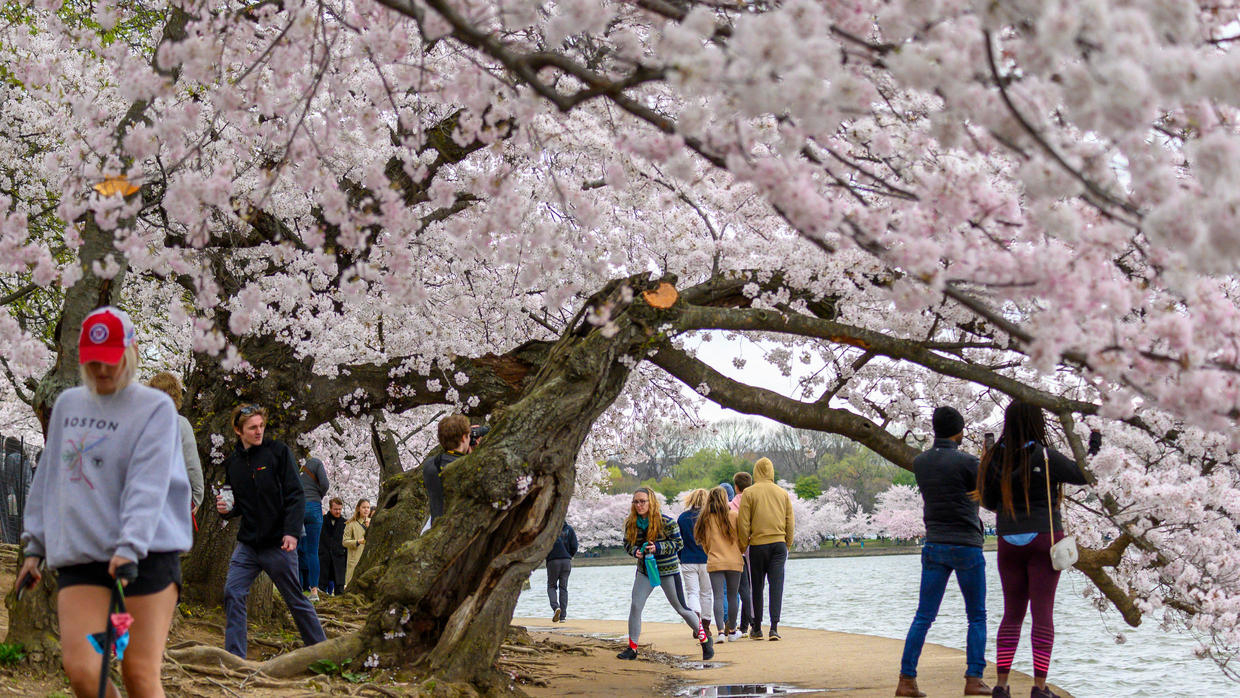
As Washingtonians muddled through coronavirus-induced isolation Saturday, the city's famed cherry blossoms reached maximum bloom, offering an enticing temptation to test the limits of
self-distancing. The delicate flowers opened just as many of the last vestiges of entertainment closed in the city, which is physically situated around a core of public attractions.
Among them are the US Capitol and Smithsonian museums, now closed to visitors, as well as looming homages to former presidents such as the Washington Monument obelisk, also shuttered.
With tourism plummeting, global movement of populations sharply curtailed and stay-at-home orders beginning to go into effect in a handful of US states, many of the tourists were gone.
In their place the pandemic had churned out a new type of visitor: local coronavirus shut-ins buoyed by the prospect of fresh air.
So much so that by Saturday, the National Park Service urged "anyone considering a visit to see the cherry blossoms to reconsider" as it announced traffic controls and closed parking in an attempt to prevent crowding.
Even with crowds substantially reduced compared with other years, the recommended six-foot (two-meter) berth was rendered nearly impossible to maintain.
Mary McGreevy from the nearby town of Alexandria, Virginia was walking around the Tidal Basin on Thursday with her two daughters in what she called "a rare outing."
The 43-year-old educator told AFP she was not "terribly worried," but noted that "as people pass by you, you know you're not six feet apart."
As the pink and white flowers burst from nimble branches on the trees that encircle the large pond-like waterway, the city announced its 98th confirmed case of coronavirus on Saturday.
- Trees 'there next year' -
"I think people feel that because there's no walls, that personal risk assessment might have changed," said Julie Fischer, a professor of microbiology at Georgetown University.
"If you go outside to someplace that's really crowded," she noted, "then you put yourself at risk of being in close proximity to someone who's potentially infected."
Earlier in the week the city's public transportation authority warned potential visitors that "the trees will be there next year," before closing two metro stops closest to the Tidal Basin "to prevent cherry blossom travel."
Official National Cherry Blossom Festival organizers canceled an annual kite festival and parade and instead installed a "BloomCam" so that the trees could be viewed live from home.
But for some the temptation of seeing the real thing was too strong.
"It's out in the fresh air, and I figured there wouldn't be that many people and there are not; this is like 10 percent of what's normally here," said Mary Ann Canter.
But the 65-year-old retiree, who had a lung transplant one and a half years ago, was forced to return to her car to get a face mask when she and her husband found that "nobody stays away from each other."
She paused to speak to AFP outside the entrance to a paddle-boat dock where more than 5,000 rides were taken last March, and more than 16,500 last April.
On Thursday morning, two lonely bright-blue paddle boats plied the water, but by Saturday, ahead of the elevated turnout, the facility had closed down "until further notice."
The drastic reduction in tourists meant a steady stream of Washington's notorious runners could make their way through.
"The risk that someone would cough or sneeze on you as you're running by is not high but it's not zero," said Fischer, noting that safe outdoor activity is important to avoid isolation's "mental toll."
The scientist, who had been asked to work remotely more than a week ago, spoke to AFP from her home, adding that it felt like "a protracted period already."AFP